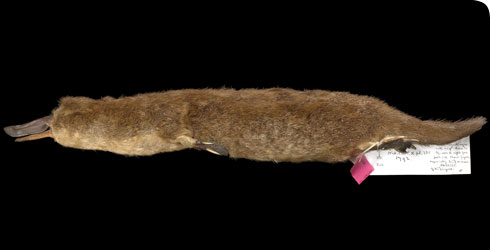Biology
Size:
Platypus head and body length averages 40-60cm from tip of bill to end of tail.
Body weight:
- Males: 800-3000g
- Females: 600-1700g (Grant, 2007)
Life expectancy:
Platypuses are long-lived animals. They can live up to:
- 20 years in captivity
- 21 years in the wild
Lactation:
From May until July, the mammary glands each consist of a small structure, only about 1cm in length, under the skin on the female’s abdomen. Towards the end of this period the glands begin to enlarge and develop into large fan-like structures which occupy much of the ventral abdominal surface of the body and may even extend up towards the back.
Lactation lasts from 3 to 4 months and sometimes over 4 months in captivity (Grant, 2007).
Platypus milk is pink-white. Biochemical analysis of the milk has shown it to be very rich, containing more total solids than that of many other mammals. Platypus milk has high concentrations of iron, necessary for the formation of haemoglobin in red blood cells (Grant, 2007).
Spurs and Venom:
Platypus males have a pair of spurs.
Each spur:
- is hollow
- is attached by a duct to a venom gland
- is made of keratin
- sits on a small nub of bone in the ankle region
A spur does not develop in the female platypus. However, a spur sheath of around 2mm is present in the ankle region for 8-10 months after emergence.
Venom is sometimes seen exuding as drops from the tips of the spurs of male platypuses, especially during the breeding season when the venom glands are enlarged.
The venom:
- is clear and slightly sticky
- consists of a complex mixture of molecules, including protein and peptides. Not all of the components have been identified and the functions of those which have been studied are not yet well understood.
The predominant symptoms attributed to the venom are:
- excruciating pain
- long-lasting tenderness and sensitivity (Grant, 2007)
-
Reproduction
Unlike most mammals that give birth to live, platypuses lay eggs. This is highly unusual, and it took 93 years from when the animals were first discovered to prove this to scientists. Find out more about platypus reproduction.
